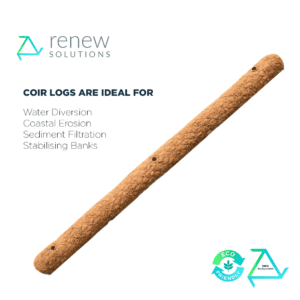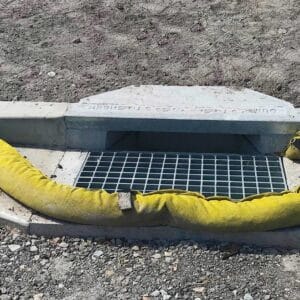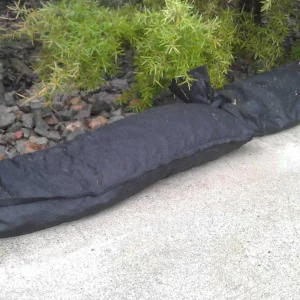- Products
Silt & Sediment COntrol
Stormwater Management
- Services
Site Compliance
Asset Solutions
Training
Reporting
- Login
- Contact Us
Menu
$979.00 – $1,562.00
Includes GST
Freight not included. Please call Renew Solutions for pricing.
These floating turbidity curtains have been deployed in various projects around Australia, New Zealand and in Papua New Guinea, New Caledonia, Fiji and Vanuatu.
See the range of applications in the video below.
Silt Curtains are generally required by marine service companies, construction companies, erosion and sediment control contractors, consultants, councils and state road authorities for the following types of projects:
Below is a guide we use in consultation with clients illustrating our suggested options per waterway and the fundamentals of each design class.
Low-Risk Applications
Little to no tidal, wave and/or wind forces.
Example: lagoon, pond, stream
Medium-Risk Applications
Moderate wind and/or water forces.
Example: river, calm harbour
High-Risk Applications
Strong wind and water forces.
Example: open ocean, harbour, river mouth
Since the purpose of a floating silt fence is to disrupt the water flow and allow the suspended sediment to settle, your curtain should be deep enough to facilitate the following:
Allow a minimum half metre gap between the curtain and the sea bed at low tide. Silt curtains are intended to promote the settling of sediment by driving particles closer to the sea bed. Water will always find the path of least resistance, therefore the water will pass between the lower edge of the curtain and the sea bed. Sediment must be forced deep enough to improve settlement. The gap between the curtain and sea bed provides a significantly more effective pressure release than the porosity of geotextile.
The deeper the curtain, the greater the hydraulic loading which can cause the curtain to flare, resulting in additional horizontal loads. Further, if the curtain penetration is too great, the water that passes beneath the skirt will be squeezed through a small gap resulting in possible further erosion of the sea bed and a resuspension of particulate into the upper water column further downstream.
Silt curtain effectiveness is considered as the degree of turbidity reduction achieved within the controlled area relative to the turbidity levels outside of the area. Factors which affect this effectiveness are:
The silt curtain is not designed to dam the turbid water. Instead, it provides a control for the dispersion of the sediment laden water and allows this suspended silt to settle. It is widely accepted that the interaction between the water column and curtain is a crucial factor in determining the efficiency of the silt curtain. It is integral to the design that the hydrodynamic loads are understood. These loads are the forces applied to the moorings and silt curtain resulting from currents, winds and waves. These forces can affect the buoyancy and ballast ratio, optimal skirt depth and choice of moorings and anchors.
Silt curtains can be cleaned and properly stored for reuse. If the curtain has been inspected, is in good condition and deemed suitable for reuse, it can be cleaned down with a high-pressure washer to remove biofouling, silt and sediment from the geotextile.
Once thoroughly dry, the curtain can be repacked on a pallet and stored. If serviced and stored properly, a high-quality silt curtain system can be reused numerous times.
Our team will provide free consultations and help spec curtains if required. We offer:
| Custom | Standard Class 1 Silt Curtain – 1m Skirt Silt Curtain (20mL, 100x50mm Float, 6mm Chain), Standard Class 1 Silt Curtain – 2m Skirt Silt Curtain (20mL, 100x50mm Float, 6mm Chain), Class 1 Silt Curtain – 3m Skirt Silt Curtain (20mL, 100x50mm Float, 6mm Chain), Standard Class 1 Silt Curtain – 4m Skirt Silt Curtain (20mL, 100x50mm Float, 6mm Chain), Standard Class 2 – 1m Skirt Silt Curtain (20mL, 100x100mm Float, 6mm Chain), Standard Class 2 – 2m Skirt Silt Curtain (20mL, 100x100mm Float, 6mm Chain), Standard Class 2 – 3m Skirt Silt Curtain (20mL, 100x100mm Float, 6mm Chain), Standard Class 2 – 4m Skirt Silt Curtain (20mL, 100x100mm Float, 6mm Chain) |
|---|



Our expert team will guide you through the process.
QLD Office
3/63-65 Dover Dve Burleigh Heads, QLD 4220
Mackay Warehouse
22 David Muir Street, Slade Point QLD 4740
NSW Office (Servicing AUS wide)
351 Wentworth Avenue, Pendle Hill, NSW, 2145
Want to drop us a line? You can get in touch by filling out the form below and we’ll get back to you as soon as possible!